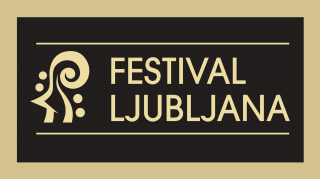Important information
The Slovene art world’s first introduction to the sculptures of the Slovene artist Vasilij (“Vasja”) Žbona, who from 1965 onwards lived and worked in Paris, came in 2005 with his first solo exhibition in Slovenia, organised for him by the Mikl House Gallery in Ribnica. This was followed five years later by a more extensive exhibition organised by the Pilon Gallery in Ajdovščina. The most complete presentation of his work to date has been the exhibition put on by the Goriška Museum at Kromberk Castle, which remained on display from November 2019 until June 2020. All three exhibitions were accompanied by catalogues containing reproductions of his works and introductory texts written by the art historian Jure Mikuž, who knew the artist well and had long followed his development as a sculptor. Writing in the catalogue for the posthumous exhibition at the Goriška Museum, Dr Mikuž commented that Žbona’s work is “characterised by a strand of modernism known as biomorphism, which has never had a prominent representative in Slovenia” (Mikuž, 2019). Following Žbona’s death, his family donated the works that had remained in his Paris studio to the Goriška Museum, an institution whose mission includes collecting and storing works by artists of the Primorska region. The exhibition in the Križanke church organised by Festival Ljubljana as part of this year’s programme will include a selection of works from the donation to the Goriška Museum and a selection from the art collection of the Riko Group in Ribnica.
Vasja Žbona (born 1945, Miren; died 2013, Paris) left the place of his birth, where he was taught drawing at the local primary school by the painter Silvester Komel, and moved to Paris with a great desire to create art. He settled in Montparnasse, where he was able to associate with the wide circle of artists who had come to France “from other lands, bringing with them memories, legends and myths and a specific imagination. In Paris this imagination encountered new, then modern forms of expression, and from this encounter artists plotted their own personal artistic paths, in most cases on the border between figurative art and abstraction” (Mikuž, 2005). Prominent among the artists in the circle that Žbona began to frequent was Augustín Cárdenas, a Cuban sculptor of African heritage, whom Žbona befriended and whose pupil be became. Cárdenas, an excellent sculptor acclaimed both in France and internationally, was very close to André Breton and the Surrealist movement in Paris. It was José Pierre – once Breton’s right-hand man and the unofficial historian of the Surrealist movement – who wrote the first article about Žbona’s work, under the title Vasilij Žbona et le dynamisme vital, in 1979. Žbona, who perfected his skills in Cárdenas’s studio in Nogent-sur-Marne, in the eastern suburbs of Paris, eventually became the older artist’s assistant and they remained lifelong friends. Žbona’s favourite medium was wood, but he also loved stone and marble. He learnt to work marble above all in Carrara, where for several years he spent the summer months sculpting and studying with Cárdenas, a master of “drawing out the soul in a Surrealist biomorphic manner from all sculptural materials, whether ordinary or burnt wood, stone of all types, or bronze” (Mikuž, 2005). Throughout his active years as an artist, he created both sculptures and assemblages. He also wrote poetry. As Dr Mikuž (2005) puts it, Žbona “made his best sculptures from wood, which would not surprise anyone who has ever heard him talking enthusiastically about nature and forests, or about individual trees – their properties, virtues and character. In his sculptures we can admire the purity and precision of the execution, the clarity of the forms and the aesthetics they embody. But their spiritual aura is given to them by the artist’s unerring feeling for the wood. This he works with a great passion in which we can sense the entire history of wooden sculpture.” Also eloquent and telling are his assemblages, which, like his sculptures, talk of the sculptor’s “respectful attitude and instinctive feeling for the material, particularly wood. In a small piece of trunk, root or sawn plank, an ordinary nail or screw, in a broken shell, in short in the debris, fragments, scraps, discards and rubbish that we are quick to overlook, tread on or even kick away beneath our feet, Žbona is capable of discovering a special quality” (Mikuž, 2010).
Although Vasja Žbona did not exhibit his work in his native country until he was sixty (in Ribnica, Ajdovščina, Kromberk), he had been taking part in group exhibitions and showing his work in solo exhibitions in Paris ever since 1974. The last time was at the Galerie Vallois in 2007. He also exhibited in Carrara, Stockholm and Luxembourg. In 1979 he won a medal in the Arts Décoratifs et Art Monumental category of the Salon des Artistes Français in Paris.
The works chosen for this first exhibition in Ljubljana come from the period between 1994 and 2009. They include works in his favourite material, wood, which offered him numerous possibilities in terms of approach and technique, and also works in marble and bronze. To list a few of them: Elle (She), 1994, wood; Oiseau (Bird), 2005, bronze; Dentée (Toothed), 2005, marble; Liane (Creeper), 2007, wood; Exotique (Exotic), 2008, wood; Le Secret (The Secret), 2009, wood; Chêne (Oak), wood; Le Roi (The King), 2009, wood. Žbona was a sculptor who loved pure harmonious lines, the eloquent interplay of the convex and concave, the blend of the hollow and the full, the dialogue between abstraction and metaphor. He loved stylisation. In his creative process he drew on the authentic messages, values and methods of a number of sculptors working in the twentieth century (from Jean Arp, whose capture of organic growth in abstract forms in various techniques was an inspiration, to Barbara Hepworth, Joan Miró, Henry Moore, Constantin Brâncuși and others) and early twenty-first century (among his contemporaries, particularly his friend Augustín Cárdenas, who introduced him to the world of sculpture both in terms of technique and content and in terms of form). With the help of their works and discoveries, he built his own artistic language, his own vision and his own message. This is also why his sculptures radiate harmony and call out to be touched. To touch the often smooth surfaces of Žbona’s sculptures is to experience that haptic quality already mentioned by José Pierre – a poet, writer and effective organiser who did much to ensure that Surrealism remained alive and interesting for a long time. These works are the eloquent expression of Žbona’s desire to stylise natural, human, animal and plant forms, to transform them into abstract and geometric forms. To seek hybrid forms that reflect the conceptual world of “the dreamlike, the fantastic, the mythological, in short everything that inspires and marks the artist’s and the viewer’s conscious mind and, even more importantly, their unconscious” (Mikuž, 2019).
Although Vasja Žbona worked in Paris, which is where he found the sculptor (and restorer) in himself, he felt his first creative impulses at home, in his native Miren, where he discovered the mysterious beauty of nature – dry and rocky in the Karst, lush and undulating by the river Vipava. Here he got to know wood and stone. Felt the power of nature, which he then tried to capture in his forms: abstracted, biomorphic. Alive. In Paris he built on all his feelings, experiences and searchings, linked them to all those artistic commandments that still applied in the circle of the Surrealists and continued to be encouraged by José Pierre right up until his death at the end of the century, and realised them in works which expressed a vital dynamism. With them, Vasja Žbona also took his place in the artistic treasury of the Primorska region and of Slovenia.
dr. Nelida Nemec



